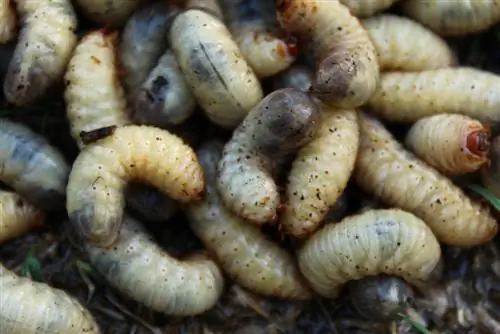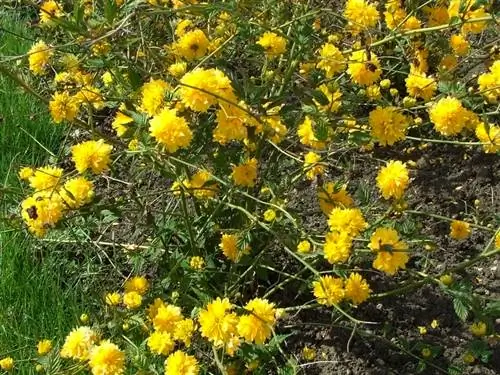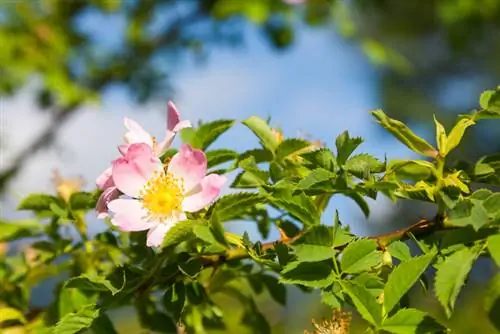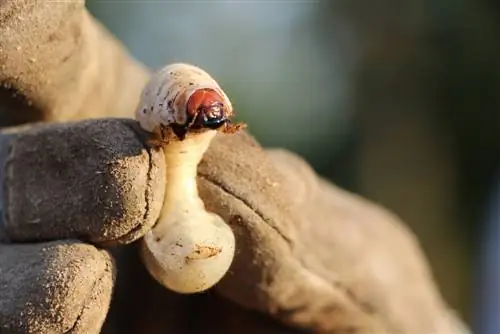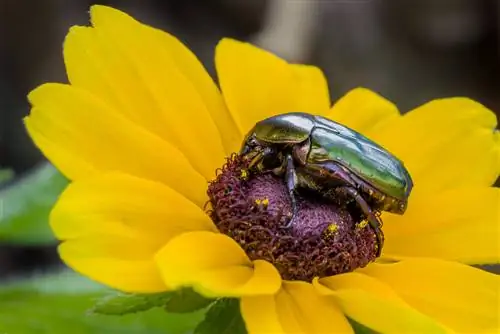- Author admin [email protected].
- Public 2023-12-16 16:46.
- Last modified 2025-06-01 06:02.
When many hobby gardeners see grubs, the alarm bells instinctively ring - after all, they are beetle larvae that can destroy plants by eating roots. Not all of them though! The rose beetle grubs, for example, should be welcomed for several reasons!
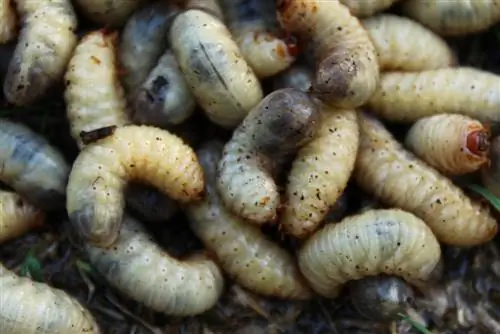
Why shouldn't you fight rose beetle grubs?
Rose chafer grubs should not be controlled as they are beneficial insects that feed on dead plant material and do no harm. In addition, rose beetles and their larvae are under special protection under the Federal Nature Conservation Act.
Rose beetle grubs are beneficial insects
Yes, grubs can be a problem in the garden. Some species feed on the roots of living plants - especially those of grass or vegetable plants such as kohlrabi, potatoes or lettuce. This is of course very annoying, even if the damage is usually still manageable. However, it is important to know that not all grubs are the same - especially in terms of their potential for damage.
In general, all larvae from the scarab beetle superfamily are referred to as grubs. The scarab beetle species that are relevant in our latitudes include
- Cockchafer
- June beetle
- rose beetle
- Rhino Beetle
- Garden leaf beetle
The species that can actually be classified as pests because of their root eating are cockchafers, June beetles and garden leaf beetles. Rhinoceros beetle and rose beetle grubs, on the other hand, feed exclusively on dead plant material. They therefore do not cause any damage to ornamental and useful plants, but rather can bring great benefits: they prefer to live in compost heaps, where they find ideal living and supply conditions. By eating garden waste, they accelerate the decomposition process and, together with bacteria and microorganisms, produce valuable permanent humus.
Rose beetles are under protection
Just to avoid turning down the gift of free humus production, it's not exactly wise to fight the rose beetle grubs. It's even illegal. Because rose beetles and, incidentally, rhinoceros beetles are under special protection under the Federal Nature Conservation Act. This means that it is forbidden to harm, capture or kill them - in all their forms of development. If a violation is discovered, there is even a risk of high fines.
Identification features of rose beetle grubs
So it is useful to be able to identify the rose chafer grubs and distinguish them from other grubs. One practical thing first: Since only the useful species feed on dead plant material and the harmful ones only on living material, the discovery of grubs in the compost is an immediate all-clear. The physical appearance of rose beetle grubs is characterized by a rather small size of around 3 centimeters with a thickened abdomen. The front pairs of legs are very short and, interestingly, they move on their backs.

